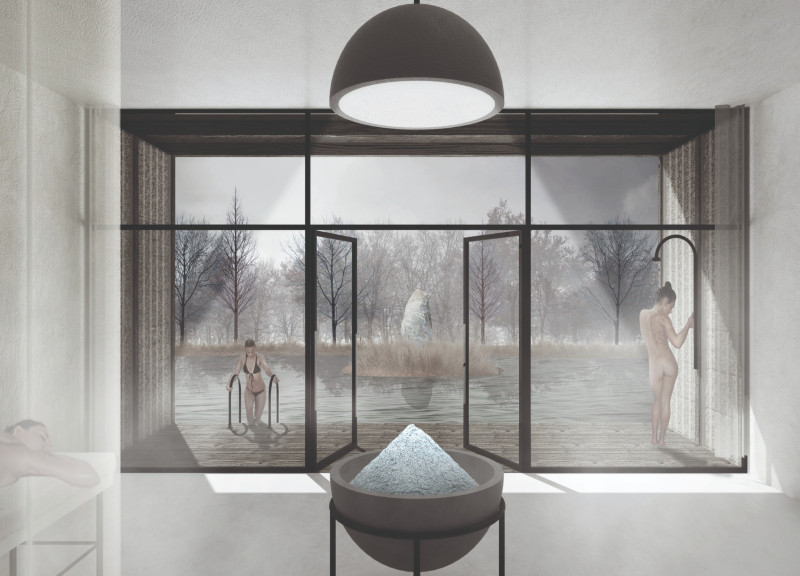5 key facts about this project
The design centers on the healing properties of blue clay, a natural resource known in Latvia for its therapeutic benefits. Located in a tranquil landscape, the spa serves as a space for wellness, encouraging guests to connect with both nature and each other. The design prioritizes the creation of a balanced environment that blends inside and outside experiences, aiming for rejuvenation of both body and mind.
Natural Elements Integration
The approach emphasizes a smooth connection between indoor and outdoor areas. Important natural features, such as oak trees and a pond, are integrated into the layout. Visitors arrive from a dirt road and move through a reception area that flows into communal spaces for dining and cooking. This transparent space invites guests to engage with the surroundings, leading them to a garden located beneath mature oak trees.
Spatial Flow and Connectivity
The design promotes ease of movement throughout the space. An open hallway connects to private bedrooms that face a hill, allowing plenty of natural light and bold views of the landscape. This arrangement fosters a feeling of closeness while maintaining a strong link to the natural environment. The enclosed spa area enhances the experience further by opening directly to the pond, which offers calming views of a small island featuring a meaningful rock formation.
Sustainability Strategies
Sustainability is a key focus in the design. Passive systems are utilized, taking into account the local climate. Features such as solar panels and rainwater harvesting systems support energy efficiency and responsible management of resources. The materials chosen for construction reflect this commitment. Wood is used for the structural components, while straw bales provide insulation. Polycarbonate panels allow light to enter while ensuring energy effectiveness.
Community and Food Production
The design encourages a spirit of communal living, featuring shared spaces that support interaction among guests and hosts. This stands in contrast to the tendency toward exclusivity in many modern spa settings. An open kitchen invites collaboration in meal preparation, highlighting ingredients sourced from on-site vegetable gardens and small animal areas. This approach not only provides nourishment but also strengthens the bond with the land and enhances the overall wellness journey.
Architectural details highlight the views of calming natural scenes within the spa, reinforcing an experience that aligns closely with its purpose of healing and rejuvenation.


























